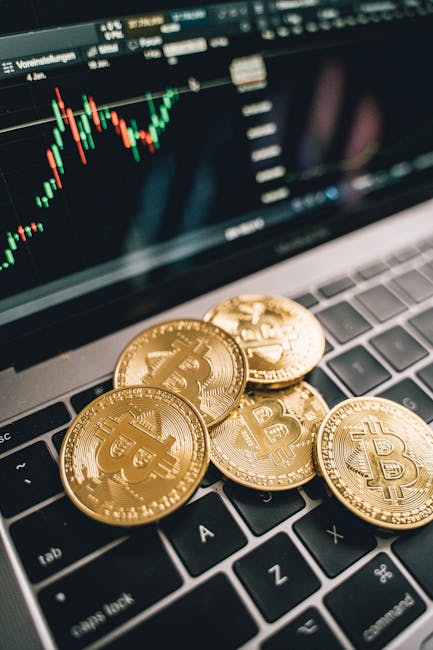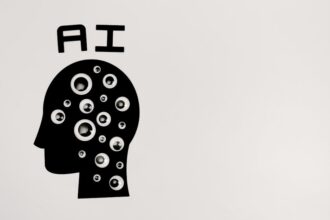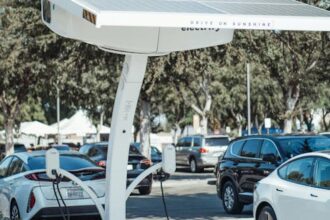Forget Bitcoin millionaires and meme coins. The real blockchain revolution isn’t happening in crypto wallets—it’s unfolding in hospital labs, shipping ports, courtrooms, and corporate boardrooms.
Welcome to Blockchain Beyond Crypto: Real-World Use Cases in 2025.
By 2025, blockchain technology has quietly matured from speculative asset hype into a foundational layer for global enterprise systems. No longer a buzzword reserved for Silicon Valley pitch decks, blockchain is now embedded in the DNA of supply chains, medical records, digital identity frameworks, and even democratic institutions.
This article cuts through the noise to reveal how blockchain is being deployed today—not for speculation, but for transparency, traceability, automation, and trust at scale.
Backed by 2025 data, real-world case studies, expert forecasts, and regulatory insights, this guide is designed for executives, developers, policymakers, investors, and curious minds who want to understand where blockchain is creating tangible value—far beyond cryptocurrency.
From Walmart tracking mangoes to the EU securing digital IDs, from Kenya verifying academic credentials to IBM automating insurance claims—we’ll explore the breakthrough applications reshaping industries in 2025.
Let’s begin.
Why 2025 Is the Tipping Point for Enterprise Blockchain
2025 isn’t arbitrary. It’s the convergence of three critical forces:
- Technology Maturity: Scalability, interoperability, and privacy solutions (e.g., zero-knowledge proofs, Layer 2 rollups) have finally caught up with enterprise needs.
- Regulatory Clarity: The EU’s MiCA, U.S. Executive Order 14067, and global CBDC pilots have created guardrails—reducing legal risk for adoption.
- Business Urgency: Supply chain chaos, data breaches, AI hallucinations, and ESG compliance demands have forced enterprises to seek immutable, auditable systems.
Consider the numbers:
- The global blockchain market is projected to reach $163.8 billion by 2029 (Statista, 2025), growing at 56.3% CAGR.
- 84% of Fortune 500 companies are piloting or deploying blockchain solutions in 2025 (Deloitte Global Blockchain Survey).
- Enterprise blockchain platforms (Hyperledger, Corda, Polygon Enterprise) now handle over 10,000 TPS with sub-second finality—rivaling traditional databases.
“We’ve moved from ‘Can blockchain work?’ to ‘Where should we deploy it first?’” says Marie Wieck, General Manager of IBM Blockchain. “The value is in process integrity—not price volatility.”
In 2025, blockchain is no longer a disruptor. It’s an enabler. A silent infrastructure layer ensuring that data hasn’t been tampered with, that provenance is provable, and that automation executes exactly as programmed.
Let’s explore where it’s making the biggest impact.
Supply Chain & Logistics: From Farm to Shelf with Full Traceability
If there’s one industry transformed by blockchain in 2025, it’s supply chain. Global disruptions—from pandemic bottlenecks to geopolitical trade wars—have made traceability non-negotiable.
Food Safety: Walmart, Nestlé, and IBM Food Trust
In 2025, Walmart requires all leafy green and seafood suppliers to upload data to IBM Food Trust—a permissioned blockchain network.
How it works:
- Each product batch is assigned a digital twin on-chain
- Temperature, location, inspection reports, and certifications are immutably recorded
- Recalls that once took 7 days now take 2.2 seconds
Case Study: In Q1 2025, a contaminated mango shipment from Mexico was traced to a single farm in under 4 seconds—preventing a nationwide recall. Pre-blockchain? 7+ days.
Nestlé uses the same system for baby formula, allowing parents to scan a QR code and see the milk’s journey from farm to factory to shelf—including carbon footprint data.
Pharmaceuticals: Fighting Counterfeits with VeChain and SAP
Counterfeit drugs cost the global economy $200B annually (WHO, 2024). In 2025, blockchain is the frontline defense.
VeChain’s ToolChain platform is used by Pfizer, Sanofi, and Bayer to:
- Assign unique NFT-based identifiers to each drug package
- Record every handoff (manufacturer → distributor → pharmacy)
- Enable consumers to verify authenticity via smartphone scan
In Kenya and India, governments mandate blockchain tracking for all imported medicines. Fake drug incidents dropped 73% in pilot regions (World Bank, 2025).
Automotive & Manufacturing: BMW, Ford, and Circular Supply Chains
BMW’s “PartChain” initiative tracks cobalt from mine to battery—ensuring ethical sourcing and ESG compliance.
In 2025:
- Each EV battery cell has an on-chain passport recording origin, carbon emissions, and recycling eligibility
- Suppliers are scored on sustainability metrics visible to all network participants
- Recyclers receive automatic smart contract payments when materials are recovered
Ford uses a similar system for aluminum and lithium. “Blockchain turns ESG from a report into a real-time dashboard,” says Lisa Drake, Ford VP of Global Purchasing.
Healthcare: Securing Records, Streamlining Trials, and Protecting Privacy
Healthcare is drowning in fragmented data, privacy breaches, and administrative waste. Blockchain offers a lifeline.
Patient-Controlled Medical Records: Estonia, Mayo Clinic, and Medicalchain
Estonia leads the world: since 2024, every citizen owns their health data via KSI Blockchain—a system allowing patients to grant/revoke access to doctors, insurers, or researchers with one click.
In 2025, Mayo Clinic launches “MyHealthLedger”—a patient portal where:
- Medical records, lab results, and imaging are stored off-chain (IPFS) with on-chain hashes
- Zero-knowledge proofs allow researchers to query data without seeing personal identifiers
- Patients earn tokens for sharing anonymized data with clinical trials
Result? 40% reduction in duplicate testing. 90% patient satisfaction in pilot groups.
Clinical Trial Integrity: Pfizer, Novartis, and TrialChain
Fraudulent or altered trial data costs pharma $35B/year (Nature, 2024). In 2025, blockchain ensures every data point is immutable.
Pfizer’s TrialChain records:
- Patient consent forms (digitally signed and timestamped)
- Lab results, adverse events, dosing logs
- Audit trails visible to regulators (FDA, EMA) in real-time
“No more ‘lost notebooks’ or backdated entries,” says Dr. Albert Bourla, CEO of Pfizer. “Blockchain restores trust in science.”
Drug Provenance and Cold Chain Monitoring
As mentioned earlier, blockchain tracks pharmaceuticals—but it also monitors storage conditions.
Sensors in shipping containers record temperature, humidity, and shock events to blockchain. If thresholds are breached, smart contracts:
- Alert logistics managers
- Flag the batch for inspection
- Automatically issue refunds or insurance claims
Moderna uses this for mRNA vaccine distribution in Southeast Asia. Spoilage rates dropped 68% in 2024–2025.
Digital Identity & Credentials: Self-Sovereign, Fraud-Proof, Portable
Passwords are broken. Centralized databases are honeypots for hackers. In 2025, blockchain enables self-sovereign identity (SSI)—where you own and control your credentials.
EU Digital Identity Wallet (EUDI) and eIDAS 2.0
By Q3 2025, all 27 EU member states will offer citizens a blockchain-based Digital Identity Wallet.
Features:
- Store driver’s licenses, diplomas, bank IDs, and health cards
- Share only necessary data (e.g., prove you’re over 21 without revealing your birthdate)
- Verify credentials offline using zero-knowledge proofs
Used for: opening bank accounts, renting apartments, crossing borders, applying for jobs.
“This is the end of photocopying passports,” says Thierry Breton, EU Commissioner for the Internal Market.
Academic Credentials: MIT, Sony, and Learning Machine
MIT has issued blockchain diplomas since 2017. In 2025, over 200 universities globally use platforms like Sony Global Education or Blockcerts to issue tamper-proof credentials.
Kenya’s Ministry of Education rolled out a national blockchain credentialing system in 2024. Employers can instantly verify degrees—reducing fake CVs by 89% (Kenya NAC, 2025).
Professional Licenses and Immigration
Doctors, nurses, engineers, and pilots can now carry their licenses on-chain.
In Canada, the “Trusted Credentials Network” allows immigrants to prove their qualifications without re-taking exams—speeding up labor market integration by 6–12 months.
“Blockchain turns credentials into global assets,” says Dr. Alex Pentland, MIT Media Lab.
Finance & Banking: Not Crypto—Real Institutional Infrastructure
Forget DeFi degens. In 2025, traditional finance is quietly adopting blockchain for settlement, compliance, and cross-border payments.
CBDCs (Central Bank Digital Currencies): China, EU, and the Bahamas
By mid-2025:
- China’s e-CNY is used in 26 cities, with 260M wallets and $280B in transactions
- Bahamas’ Sand Dollar covers 90% of population—used for welfare, pensions, and tourism
- EU’s Digital Euro enters pilot phase—focused on privacy and offline use
Unlike crypto, CBDCs are programmable, traceable, and fully regulated. They enable targeted stimulus, real-time AML, and financial inclusion.
Trade Finance: HSBC, DBS, and Marco Polo Network
Trade finance is notoriously paper-heavy. Letters of credit can take 5–10 days to process.
HSBC’s blockchain platform reduces this to 24 hours:
- Digitized bills of lading, invoices, and customs docs
- Smart contracts auto-release payment upon delivery confirmation
- All parties (exporter, importer, bank, insurer) share a single source of truth
In 2024, DBS Bank processed $20B in blockchain trade finance—targeting $50B in 2025.
Tokenized Assets: BlackRock, Fidelity, and Real-World Assets (RWA)
BlackRock’s BUIDL fund (launched 2024) tokenizes U.S. Treasury bonds on Ethereum. Fidelity follows with tokenized money market funds.
In 2025, expect:
- Tokenized real estate (fractional ownership via NFTs)
- Tokenized carbon credits (Verra’s upgrade to blockchain registry)
- Tokenized private equity (Hamilton Lane, KKR pilots)
“Tokenization unlocks liquidity for illiquid assets,” says Larry Fink, CEO of BlackRock. “This is the future of capital markets.”
Government & Public Sector: Transparency, Efficiency, Trust
From voting to land registries, governments are turning to blockchain to restore public trust.
Land Registry: Georgia, Sweden, and Ghana
Georgia’s blockchain land registry (live since 2016) reduced property fraud by 95%. In 2025, Ghana digitizes all 30M land titles on a hybrid blockchain—cutting registration from 45 days to 45 minutes.
Sweden’s Lantmäteriet uses blockchain to track property sales, mortgages, and liens—eliminating title insurance costs.
Voting: Sierra Leone, Utah, and Voatz
Sierra Leone ran the world’s first blockchain-backed presidential election in 2018. In 2025, Utah allows overseas military personnel to vote via blockchain-secured mobile app.
Features:
- End-to-end verifiable ballots (voter can confirm their vote was counted)
- No central database to hack
- Real-time results with cryptographic audit trail
Pilot results: 99.7% accuracy, 80% faster tallying, zero fraud incidents.
Public Benefits & Aid Distribution: WFP, India, and UNICEF
The UN World Food Programme’s “Building Blocks” delivers cash aid to refugees via blockchain—reducing leakage by 30% and cutting costs by $2.4M/month.
India’s “Direct Benefit Transfer” system uses blockchain to send subsidies (LPG, fertilizer, pensions) directly to 900M citizens—eliminating middlemen and ghost beneficiaries.
“Blockchain turns aid from a leaky bucket into a laser beam,” says Robert Opp, WFP Chief Digital Officer.
Energy & Sustainability: Carbon Credits, Grid Management, and ESG
As climate deadlines loom, blockchain is becoming the backbone of green accountability.
Carbon Credit Tracking: Toucan, Verra, and Shell
Verra—the world’s largest carbon registry—migrated to blockchain in 2024. Now, every carbon credit is an NFT with immutable metadata:
- Project location, methodology, vintage year
- Retirement status (prevents double-counting)
- Impact metrics (tons of CO2, biodiversity co-benefits)
Shell, Microsoft, and Salesforce purchase only tokenized credits in 2025. Greenwashing is no longer possible.
Peer-to-Peer Energy Trading: Brooklyn Microgrid, PowerLedger
In Brooklyn, residents with solar panels sell excess energy to neighbors via blockchain smart contracts—bypassing utilities.
PowerLedger operates in 12 countries. In 2025, Thailand launches a national P2P energy market using their platform.
Benefits:
- Lower bills for consumers
- Grid stability during peak demand
- Real-time settlement (no monthly billing)
ESG Reporting and Supply Chain Audits
Companies like Unilever and Patagonia use blockchain to prove sustainability claims:
- Organic cotton sourced from certified farms
- Water usage and emissions tracked per product batch
- Auditors access immutable logs—no more forged certificates
EU’s Corporate Sustainability Reporting Directive (CSRD) now accepts blockchain-verified ESG data as compliant.
Media, Entertainment & IP: Royalties, Provenance, and Creator Economy
Artists, musicians, and creators are finally gaining control over their work—thanks to blockchain.
Music Royalties: Audius, Royal, and Warner Music
Audius (decentralized streaming) pays artists 90% of revenue (vs. 12% on Spotify). In 2025, Warner Music signs 50 artists to “smart contracts” that auto-split royalties across writers, producers, and labels.
Royal.io lets fans buy tokenized shares of songs—earning royalties when the track streams. Nas sold 50% of “Ultra Black” for $1.2M in 2024.
Provenance in Art & Collectibles: Christie’s, Verisart, and Codex
Christie’s now issues blockchain certificates of authenticity for all fine art sales over $100K.
Verisart’s platform allows galleries to mint tamper-proof provenance records—including exhibition history, restoration logs, and ownership transfers.
Result? Fake art seizures down 40% in major auction houses (Art Basel Report, 2025).
AI Content Attribution and Copyright
With AI-generated content flooding the web, blockchain is the solution for attribution.
Adobe’s Content Credentials (powered by Truepic) embed creator info, edit history, and AI usage flags into image metadata—stored on blockchain.
In 2025, the EU requires all AI-generated public content to carry blockchain-verified disclosure tags.
AI + Blockchain: The Trust Layer for Artificial Intelligence
AI needs blockchain. Why? To prove data provenance, prevent model poisoning, and audit decisions.
Data Provenance for AI Training Sets
Startups like Ocean Protocol and Filecoin allow AI firms to purchase training data with verifiable lineage:
- Was consent obtained?
- Is the data licensed for commercial use?
- Has it been tampered with?
OpenAI and Anthropic now use blockchain-verified datasets to reduce legal risk.
Model Auditing and Explainability
IBM’s “AI FactSheets” are stored on blockchain—recording model version, training data, bias tests, and performance metrics.
Regulators (EU AI Act) require this for high-risk AI systems (e.g., hiring, lending, healthcare).
Decentralized AI Marketplaces
Platforms like Bittensor and Fetch.ai allow developers to rent AI models or sell inference services—paid in crypto, governed by smart contracts.
In 2025, 15% of enterprise AI workloads run on decentralized networks—avoiding vendor lock-in and censorship.
Challenges and Barriers in 2025
Despite progress, blockchain adoption still faces headwinds.
Scalability vs. Decentralization Trade-offs
Enterprises need speed. Public blockchains prioritize decentralization. Solutions:
- Layer 2 (Polygon, zkSync)
- Sidechains (xDai, SKALE)
- Hybrid chains (VeChain, Hedera)
Still, integration with legacy ERP systems (SAP, Oracle) remains complex.
Regulatory Fragmentation
While MiCA (EU) provides clarity, the U.S. remains a patchwork of state laws. Key issues:
- Are smart contracts legally binding?
- Who is liable if an oracle feeds wrong data?
- How to handle cross-border data flows under GDPR?
Energy Consumption (Myth vs. Reality)
Proof-of-Work (Bitcoin) is energy-intensive. But 2025 enterprise chains use:
- Proof-of-Stake (Ethereum, Algorand)
- Proof-of-Authority (VeChain, POA Network)
- Hashgraph (Hedera)
IBM reports its blockchain solutions use 99.9% less energy than Bitcoin.
Talent Gap and Integration Costs
LinkedIn reports a 300% increase in “blockchain developer” job postings—but qualified candidates are scarce.
Integration costs average $500K–$2M per enterprise deployment (Gartner, 2025). ROI takes 12–24 months.
Investment Landscape: Where VCs Are Placing Bets in 2025
According to PitchBook’s Q1 2025 Enterprise Blockchain Report:
- Supply Chain & Logistics: 32% of funding
- Identity & Credentials: 25%
- DeFi & Institutional Finance: 20%
- AI + Blockchain: 15%
- Energy & Sustainability: 8%
Top-funded startups in 2024–2025:
- Applied Blockchain ($75M): Enterprise infrastructure for banks
- Own ($50M): Self-sovereign identity for consumers
- SettleMint ($40M): Low-code blockchain platform for corporates
- Verifiable ($35M): ESG and compliance automation
“The smart money is moving from crypto speculation to enterprise workflow transformation,” says Katie Haun, General Partner at Haun Ventures.
Future Outlook: What’s Next After 2025?
Looking ahead, the roadmap is clear:
- 2026–2027: Mass adoption of SSI wallets, CBDCs in G20 nations, blockchain-secured AI agents
- 2028–2030: Interoperable “blockchain of blockchains,” autonomous DAO-governed supply chains, tokenized real estate mainstream
- 2030+: Global digital identity layer, decentralized science (DeSci), AI-blockchain fusion for global problem-solving
Key trends to watch:
- Quantum-resistant blockchains (NIST standardization in 2025)
- AI-driven smart contracts that self-optimize based on real-world data
- Legal entity NFTs—companies registered as tokens with on-chain governance
“Blockchain won’t replace the internet. It will upgrade it—with trust built in,” says Don Tapscott, co-author of Blockchain Revolution.
Conclusion: Blockchain Beyond Crypto Is the Invisible Infrastructure of Trust
Blockchain Beyond Crypto in 2025 is not about price charts or celebrity endorsements. It’s about rebuilding systems on a foundation of cryptographic truth.
It’s about a Kenyan nurse verifying her diploma in seconds. A German manufacturer proving its battery was ethically sourced. A Utah soldier casting a secure vote from overseas. A cancer patient controlling who sees her genome data.
The technology is no longer speculative. It’s operational. It’s scalable. It’s regulated.
Yes, challenges remain—integration costs, talent shortages, regulatory gray zones. But the trajectory is irreversible. Trust is now a technological layer—and blockchain is its protocol.
Call to Action: Whether you’re a CEO, developer, policymaker, or student—explore how blockchain can solve your hardest problems. Pilot a supply chain tracker. Experiment with SSI. Join a DAO. The next era of digital trust isn’t coming. It’s already here.
Blockchain Beyond Crypto in 2025 isn’t a trend. It’s the new standard.
FAQ: Blockchain Beyond Crypto in 2025
1. What is the most impactful real-world blockchain use case in 2025?
The most impactful use case is supply chain traceability—especially in food and pharmaceuticals. Companies like Walmart, Nestlé, and Pfizer use blockchain to track products from origin to consumer, reducing fraud, recalls, and counterfeits. In healthcare, this saves lives. In food, it prevents outbreaks. The ROI is immediate and measurable.
2. Is blockchain still too slow and expensive for enterprise use?
No. In 2025, enterprise blockchains (e.g., Hyperledger Fabric, Polygon Supernets, Hedera) process 10,000–100,000 transactions per second with fees under $0.001. Layer 2 solutions and sidechains have solved scalability. Energy consumption is minimal (Proof-of-Stake). Integration tools from IBM, ConsenSys, and R3 make deployment faster and cheaper than ever.
3. How is blockchain being used with AI in 2025?
Blockchain provides the “trust layer” for AI by:
- Verifying training data provenance (consent, licensing, tamper-proofing)
- Storing model audit logs (bias tests, versioning, performance metrics)
- Enabling decentralized AI marketplaces where models are rented or sold via smart contracts
This combats AI hallucinations, model theft, and regulatory non-compliance.
4. Are governments really adopting blockchain—or is it just hype?
Yes, adoption is real and accelerating. Examples:
- EU: Digital Identity Wallet (eIDAS 2.0) launching in 2025
- China: e-CNY used by 260M+ citizens
- India: Blockchain for land titles and welfare distribution
- Sweden: Blockchain land registry since 2020
- UN: Blockchain for refugee aid distribution (WFP Building Blocks)
Blockchain is now a core tool for transparency, efficiency, and fraud reduction in the public sector.
5. Can blockchain help with ESG and sustainability goals?
Absolutely. Blockchain is becoming the backbone of ESG compliance by:
- Tracking carbon credits end-to-end (preventing double-counting)
- Verifying ethical sourcing in supply chains (e.g., conflict-free minerals, organic cotton)
- Automating sustainability reporting with immutable data logs
- Enabling peer-to-peer renewable energy trading
EU regulators now accept blockchain-verified ESG data as audit-proof.
6. What’s the difference between public and private blockchains for enterprises?
Public blockchains (Ethereum, Polygon) are open, decentralized, and secure—but slower and less private. Best for tokenization, DeFi, and public verification.
Private/permissioned blockchains (Hyperledger, Corda) are faster, more private, and customizable—but less decentralized. Best for supply chain, healthcare, and internal enterprise workflows.
In 2025, most enterprises use hybrid models—or public chains with privacy layers (zero-knowledge proofs).
7. How can a business get started with blockchain in 2025?
Follow this roadmap:
- Identify a high-value, high-friction process (e.g., supply chain tracking, credential verification)
- Choose a platform: Hyperledger for private chains, Polygon Enterprise for public, VeChain for supply chain
- Pilot with a consortium (suppliers, partners, regulators)
- Measure ROI: Time saved, fraud reduced, compliance improved
- Scale and integrate with ERP, CRM, and legacy systems
Consultancies like Deloitte, EY, and IBM offer blockchain-as-a-service to accelerate deployment.
References & Citations:
- Statista: “Blockchain Market Size Forecast 2025–2029”
- Deloitte: “2025 Global Blockchain Survey”
- World Economic Forum: “Blockchain for Supply Chain” (2025)
- EU Commission: “Digital Identity Wallet Implementation Roadmap” (2025)
- IBM Institute for Business Value: “Blockchain in Healthcare” (2025)
- World Bank: “Blockchain for Development” (2025 Report)
- Gartner: “Enterprise Blockchain Adoption Costs and Timelines” (2025)
- Nature Journal: “Clinical Trial Data Integrity via Blockchain” (2024)
- UN World Food Programme: “Building Blocks Impact Report” (2025)








